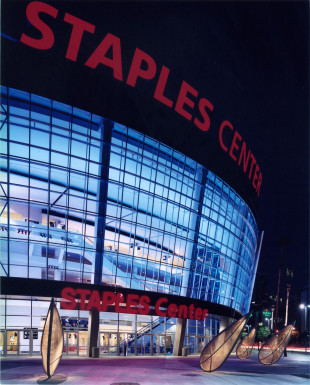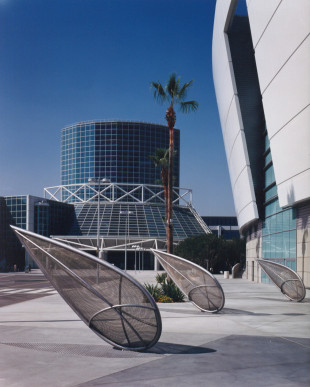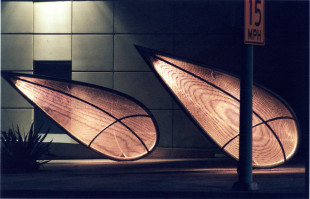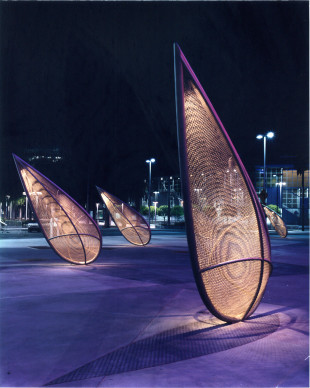- 01
- 02
- 03
- 04
- 05
- 06
- Garland (1999) – detail of installation
Stainless steel, halogen lamps, colored concrete paving
Each light sculpture approx. 13’ x 5’ x 2.5’ - Garland (1999) – detail of installation
Stainless steel, halogen lamps, colored concrete paving
Each light sculpture approx. 13’ x 5’ x 2.5’ - Garland (1999) – overview of installation
Stainless steel, halogen lamps, colored concrete paving, engraved bronze marker
Each light sculpture approx. 13’ x 5’ x 2.5’ - Garland (1999) – detail of installation
Stainless steel, halogen lights, colored concrete paving
Each light sculpture approx. 13’ x 5’ x 2.5’ - Garland (1999) – detail of installation
Stainless steel, halogen lights, colored concrete paving
Each light sculpture approx. 13’ x 5’ x 2.5’ - Garland (1999) – detail of installation
Stainless steel, halogen lights, colored concrete paving
Each light sculpture approx. 13’ x 5’ x 2.5’
Project Title: Garland
Date Completed: 1999
Commissioned by: Los Angeles Arena Company, LLC
Project Location: Corner of Figueroa St. and 12th Dr., Los Angeles, California
In ancient arenas and sacred architecture, the spectator’s journey proceeded through a succession of layers toward the action at the center.
Today at Staples Center Garland, named for the wreath given to athletic victors in ancient Greece, presents the first layer occurring between the street and the stage. It consists of a sequence of identical elements: seven sculptural lanterns of stainless steel. Installed on an arc across the plaza, the lanterns tilt and rise in height from one through seven, accenting a feeling of movement and gesture. Each is on axis with a major public space in downtown Los Angeles.
Distinct day and night aspects respond to the building’s programming. By day, the artwork casts shadows that move with the sun’s angle. At night, the lanterns project “nets” of light patterns onto surrounding surfaces. Illuminated from within, each lantern’s skin of woven wire creates various moire effects that shift with the viewer’s perspective, creating an interactive aspect.
Garland engages the “choreography of arrival” of pedestrians: as people pass between the lanterns they literally enter the artwork, whose semicircular form creates a “plaza-within-a-plaza” at the entry doors.
A bronze benchmark in the paving near the doors marks the point of the lanterns’ imaginary convergence by identifying its exact longitude and latitude. Its emblem is a triskelion, ancient Greek symbol of competition and progress.





